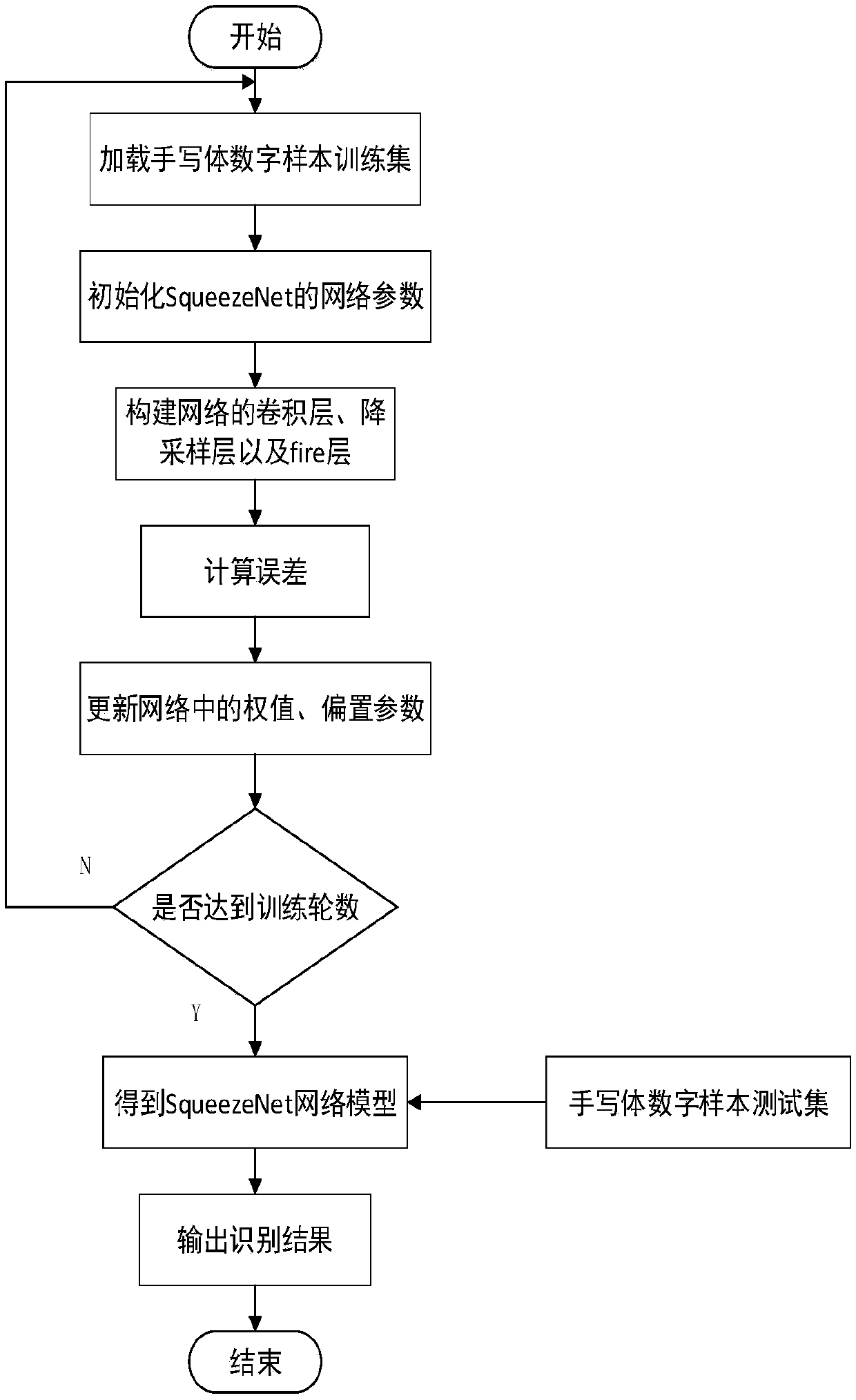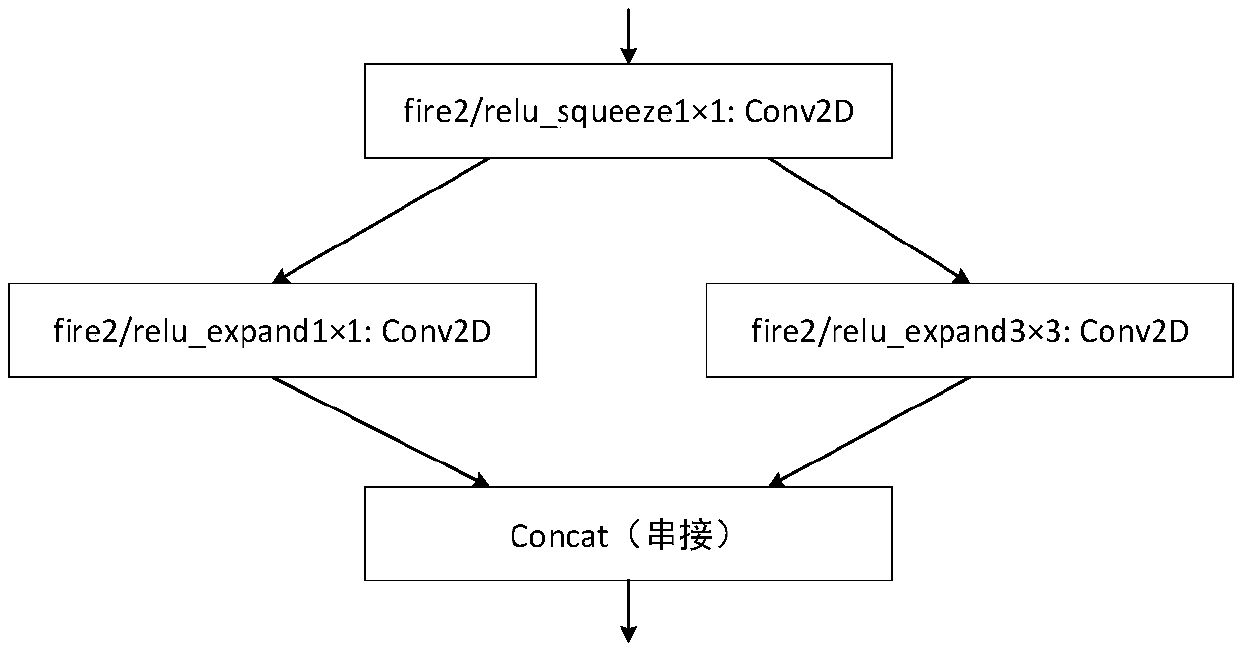SqueezeNet based handwritten digital recognition method
A digital recognition and handwriting technology, applied in character and pattern recognition, instruments, computer parts, etc., can solve the problems of ineffective application, high network model overhead, hardware device application limitations, etc., to reduce memory and network training. The time required, the effect of speeding up the weight update rate
- Summary
- Abstract
- Description
- Claims
- Application Information
AI Technical Summary
Problems solved by technology
Method used
Image
Examples
Embodiment Construction
[0034] Such as figure 1 Shown, a handwritten digit recognition method based on SqueezeNet.
[0035] Step 1, preprocessing the recognized handwritten digit samples.
[0036] (1.1) Load the training set, test set and label value of handwritten digits;
[0037] (1.2) Normalize the training set and test set;
[0038] (1.3) The network input is required to be in the format of a picture, and the loaded handwritten digital samples are stored in a one-dimensional array, so the one-dimensional sample data must be reshaped to 28*28*1 before building the network The 3D matrix sample data for .
[0039] Step 2, build and initialize the SqueezeNet network model.
[0040] (2.1) Initialize the network parameters of SqueezeNet, which is divided into two steps:
[0041] (2.1.1) Set the size of the number of samples (batch_size) taken in the handwritten digital training set for each training and the number of rounds (nb_epoch) of network training, and only take batch_size samples each time...
PUM
 Login to View More
Login to View More Abstract
Description
Claims
Application Information
 Login to View More
Login to View More - Generate Ideas
- Intellectual Property
- Life Sciences
- Materials
- Tech Scout
- Unparalleled Data Quality
- Higher Quality Content
- 60% Fewer Hallucinations
Browse by: Latest US Patents, China's latest patents, Technical Efficacy Thesaurus, Application Domain, Technology Topic, Popular Technical Reports.
© 2025 PatSnap. All rights reserved.Legal|Privacy policy|Modern Slavery Act Transparency Statement|Sitemap|About US| Contact US: help@patsnap.com



